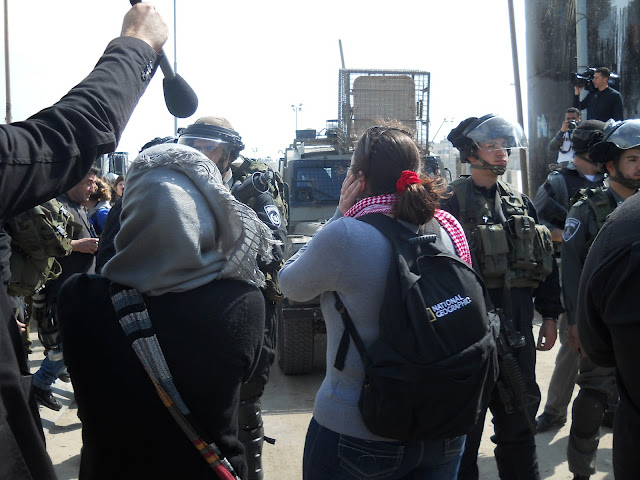Tag: International Women’s Day
-
Women’s day demonstration in Qalandia for the rights of female Palestinian prisoners
by Satu 8 March 2012 | International Solidarity Movement, West Bank On International Women’s day, March 8th, hundreds of demonstrators rallied in Qalandia in solidarity with hunger striker Hana Shalabi and calling for Israel to end the occupation. The demonstrators marched marched down the street next to the separation wall to Qalandia checkpoint, carrying placards…
-
Interviews with Palestinian women activists in honor of International Women’s Day
08 March 2011 | Ramona M. And Cicarre Parrhesia Tuesday marks International Women’s Day, a global celebration of women. In Palestine, rallies and conferences were organized to celebrate this day. These provided a chance and space to reflect on the achievement of Palestinian women, and the many steps still needed to attain full equality with…
-
Several people injured at the International women’s day demonstration at Qalandiya checkpoint
05 March 2011 | International Solidarity Movement At the 5th of March several protesters at Qalandiya checkpoint were injured. Among the injured were a 23 year old Swedish ISM activist hit by a tear gas grenade. The grenade burned her skin and left a bleeding wound on her arm, burned her hair, and left her…

